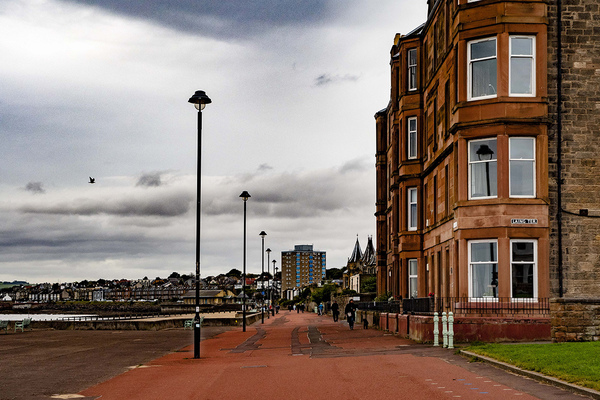Candidate: Portobello
Location: Edinburgh, UK
Category: The Great Neighbourhood Award (winner)
Year: 2020
Other Finalists in this category: Levenshulme, Manchester and South Bank, Leeds
Assessment Summary
Portobello is Edinburgh’s face to the sea and was developed from the late 18th Century as a seaside resort and an industrial town. It is now a distinct neighbourhood of Edinburgh. From its major period of development in the 19th Century it has a range of housing from workers cottages and tenements to large detached villas and, traditionally, a very socially diverse population that continues today. The ethnic mix of Portobello is the same as Edinburgh as a whole, with a predominantly white Scottish and other European population plus a small Asian community.
The mixed nature of the housing gives the area an edge and identity often missing from suburban areas connected to major cities. It is close to the centre but has its own unique identity and both splendid historic and contemporary domestic architecture. Local architects have created some very original and distinctive homes including the award-winning Ramp House, built around the needs of a disabled family member, and the ‘Bath Street Collective Custom Build’ a collectively built energy-efficient contemporary version of the traditional Scottish tenement that is home to four families.
The area is well connected, there are excellent bus services to other parts of Edinburgh and a railway station about 15 minutes walk away. The main street and coast road are unspoilt by heavy traffic because of the nearby, but unloved, A199 bypass, the Sir Harry Lauder Road, connecting Portobello to the national road network.
Although it is now a highly desirable suburb of Edinburgh with good facilities it has not apparently been gentrified in the way that many similar areas elsewhere have. Whilst the neighbourhood certainly shows signs of aspirational 21st Century social and cultural change there are still a significant number of older, poorer shops and pubs amongst the new cafes, bars and retail uses making the area seem lived in but not too complacent or comfortable.
What is very apparent about Portobello is the strong sense of community and pride and there have been some significant victories as a result of community action.The strong community drive is demonstrated by organisations like the Bellfield Centre and Tribe Porty.The Bellfield Centre is a former church and parish building that was the first community buyout under the Scottish Community Right to Buy, which is part of the Land Reform (Scotland) Act 2003, with the support of the Scottish Land Fund. It reopened as a community run centre in 2018. The achievement is really impressive as the purchase required support from 10% of the local population, which exemplifies the level of community and volunteer commitment to the scheme and the area.
Working from a former industrial building,Tribe Porty aims to provide a space for nurture and growth of human potential through supporting local people through work, art and quality of life opportunities. This is achieved through practical activities and support and encouraging connections between individuals and small businesses. Their work is informed by evidence that health and wellbeing activity not only brings transformational change, but also economic benefits. It provides affordable workspaces and co-working opportunities and works on multi-disciplinary creative projects.Members of the 100 strong collective are free to grow as individuals, whilst Tribe encourages collaborative opportunities.
Impressively there seems to be no competition between the various groups and individuals that separately and collectively work towards the future of Portobello.The communication that adds to the sense of place is enhanced through social media with residents running Portobello Online and a Porty Podcast.
There also appears to be a strong, if not perfect, partnership with the City Council. Inevitably local community groups are not always in agreement with Council decisions or policies. For example, there has been a successful community drive to alter the proposals for the significant and prominent West Bank site that will enhance the community benefits but reduces the Council’s capital receipt for the asset. Despite these conflicts, a City Councillor said that: ‘You can’t do anything to Portobello, you have to do it with Portobello’.
The coastline is well used with an attractive clean, sandy beach and there are a number of community-organised seaside based cultural and sports events and festivals, such as the annual busking festival. The old brick making, ceramic and glass industries have disappeared but are now celebrated as part of the area’s heritage. Two former bottle kilns are being restored as part of a community-based heritage project and there is a public art trail organised by Art Walk Porty. As part of a year-long festival 38 ‘art houses’ are opening their doors featuring some 53 artists.
Portobello is a very interesting, attractive and pleasant neighbourhood with an excellent location.
Lead Assessor:
Tim Challans AoU
Deputy Lead Assessor:
Jef Smith AoU, Ann Wallis AoU









